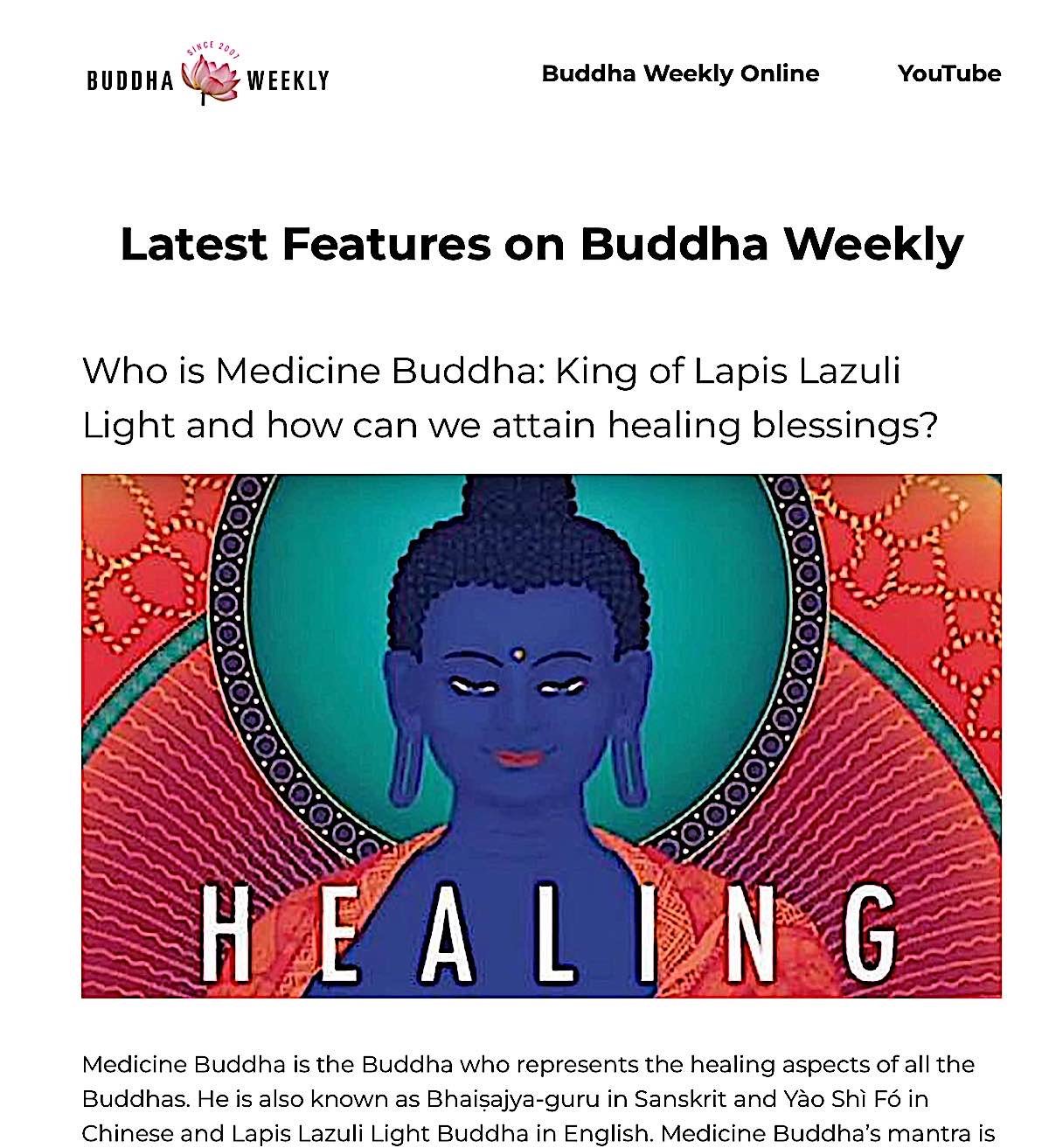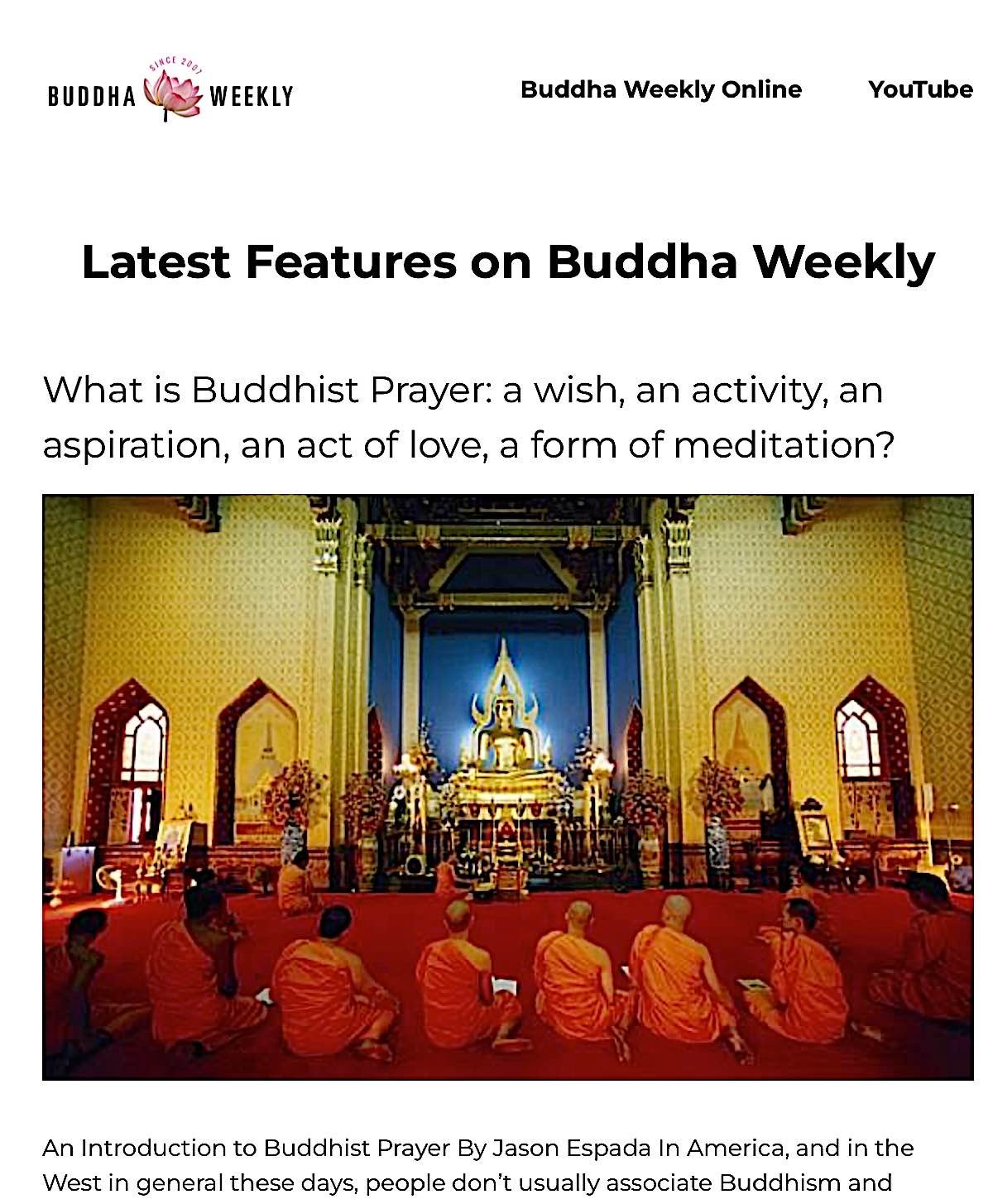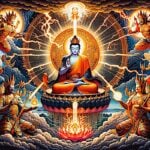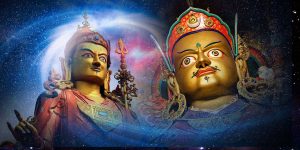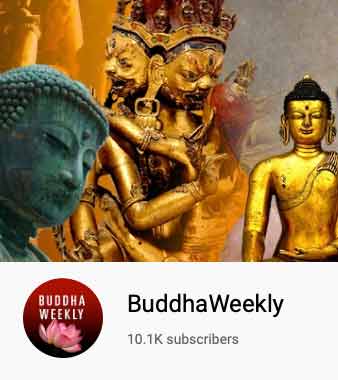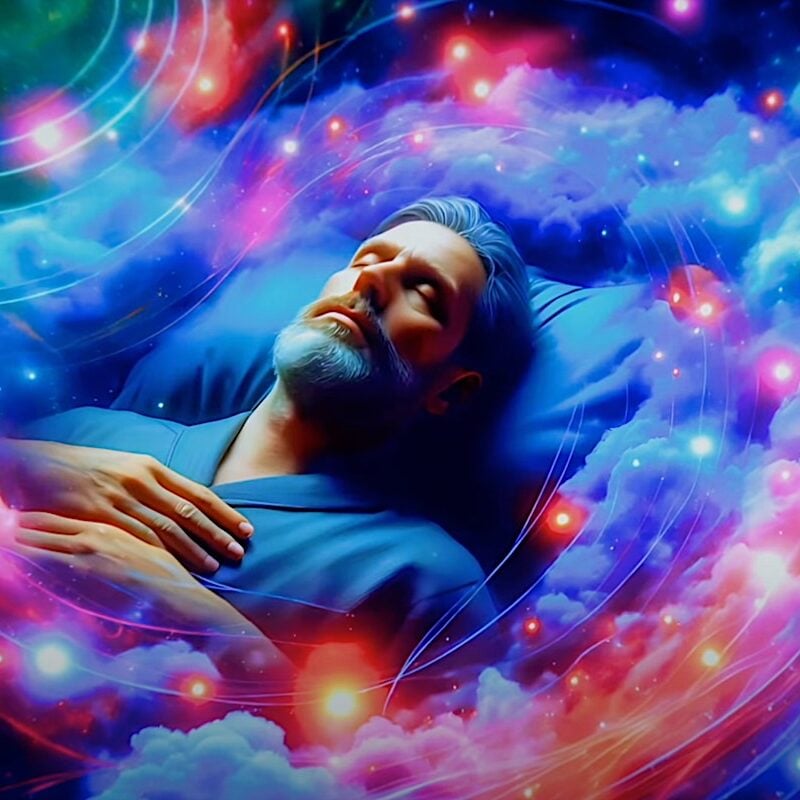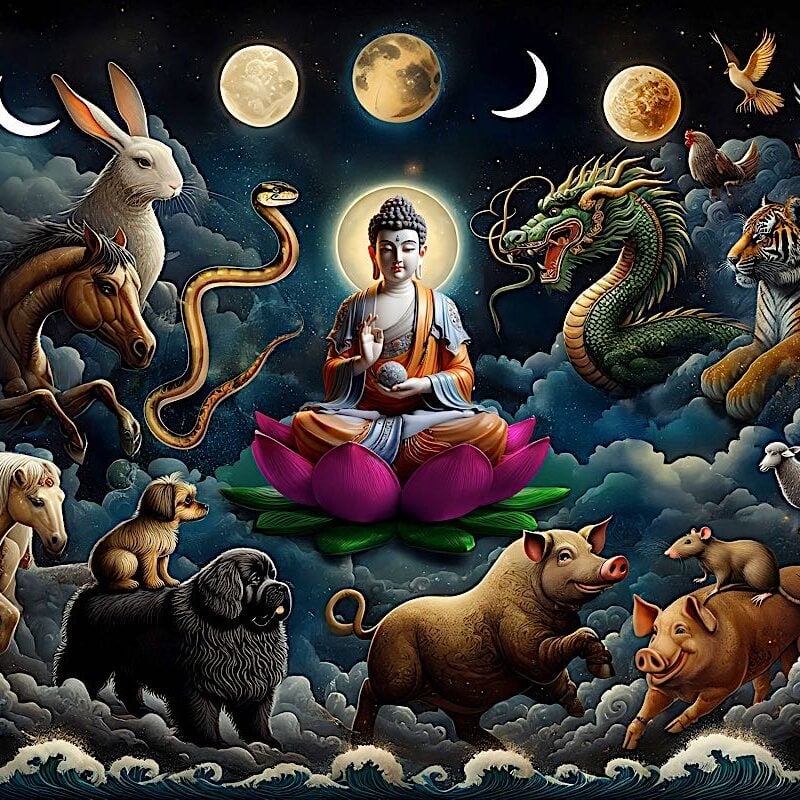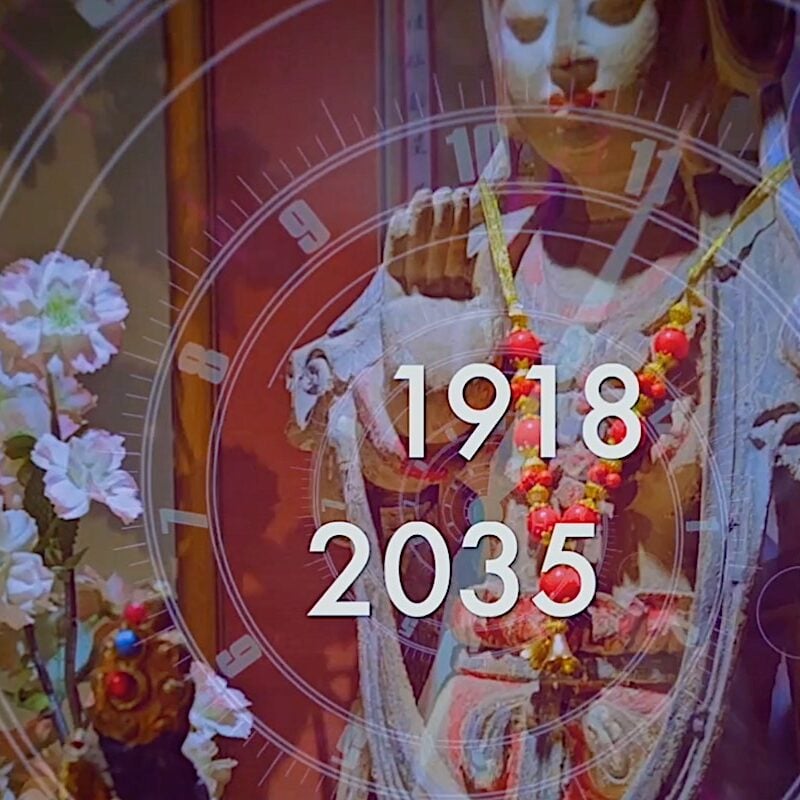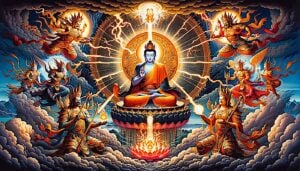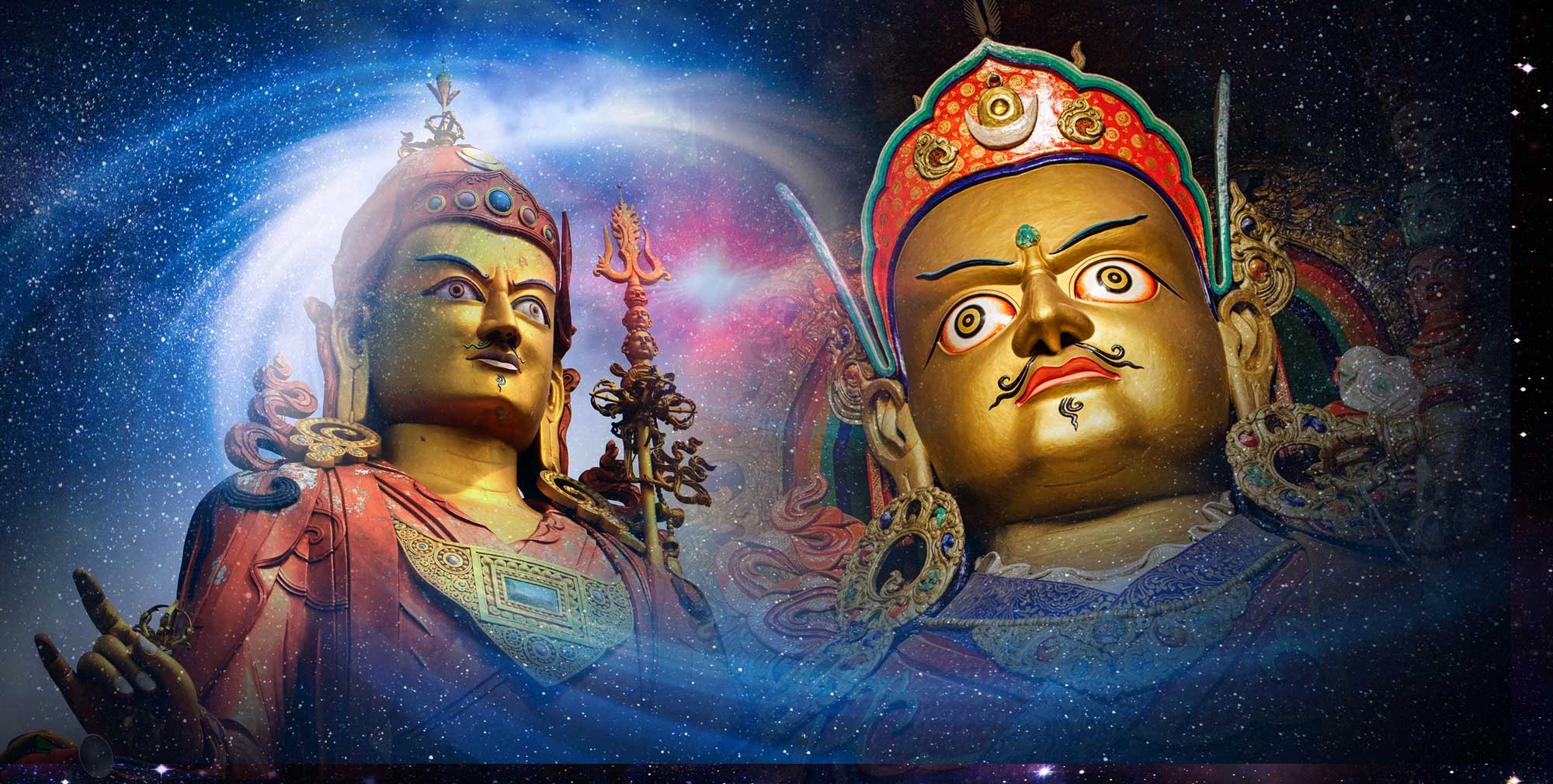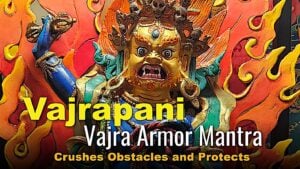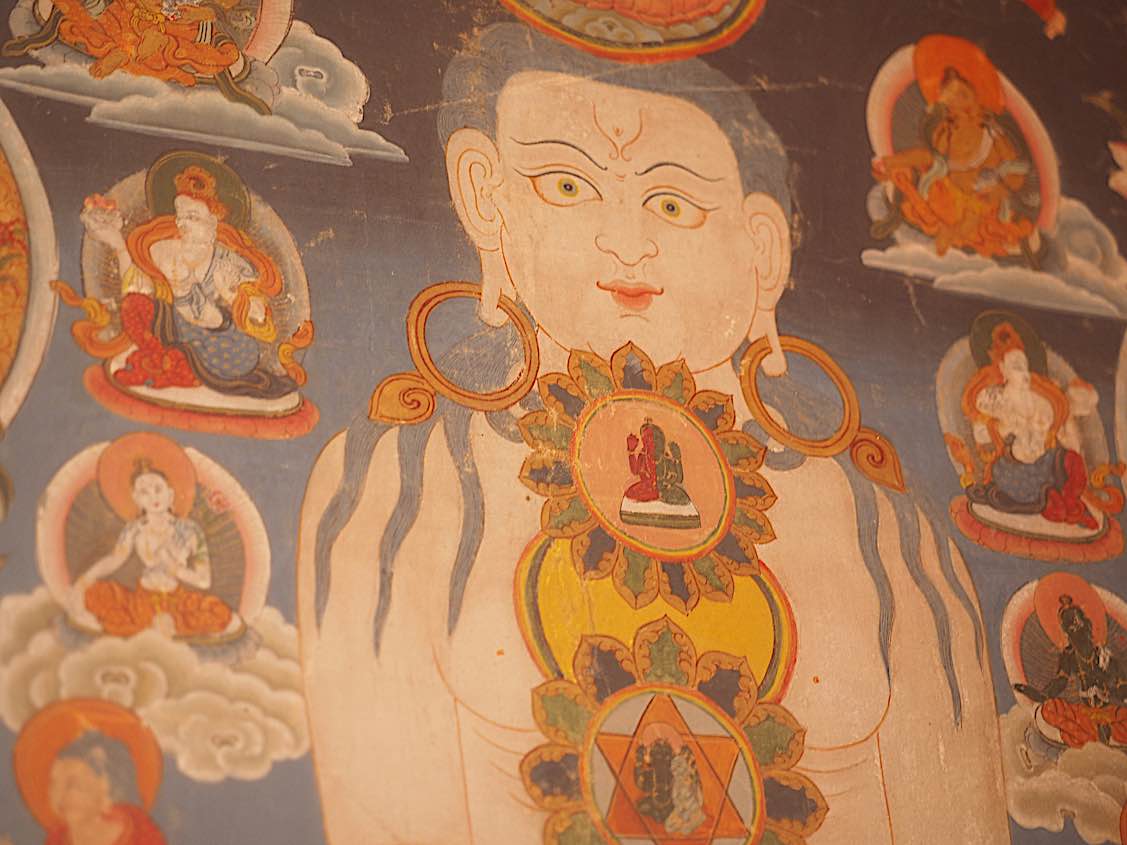“Dharma in motion”: Buddhism, Vajrayana Buddhist Tantra and Zen have as much in common with martial arts as religion?
Premise: Buddhism, Vajrayana Tantra and Zen have as much in common with martial arts as it does with religion.
Second Premise: Martial arts skills are helpful to meditators and helps develop practice discipline.
That may seem like an absurd or frivolous statement, but there’s a core truth in there. Buddha himself focused on practice, conduct and self-help methods — not on metaphysics and gods. Martial arts, putting aside the “fighting” aspect, also focuses on practice, conduct and self-help.
In a previous BW interview, H.E. Zasep Rinpoche, who is an Aikido practitioner (and also practices Laido sword art) remarked:
Foundation Buddhist practice “is like the beginner’s “form” when you study martial arts. You need to master that first, before progressing.”
BW Interview with H.E. Zasep Rinpoche here>>
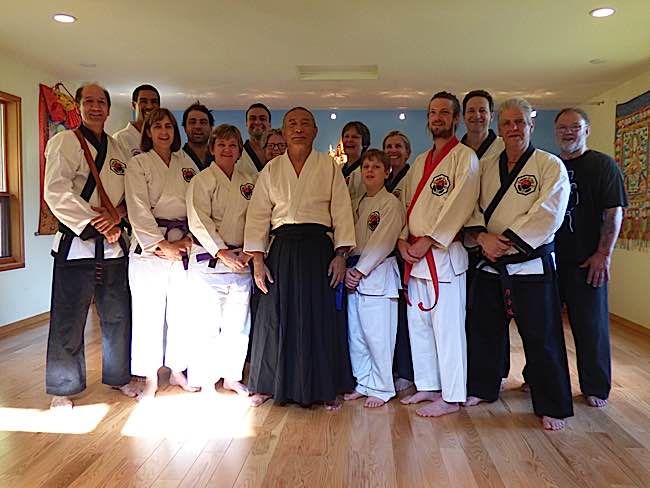
Many practices in Buddhism rely on a teacher or guide, much like a martial arts instructor, although ultimately you have to do it all yourself. You could say, the goal is an nth-degree black belt — Enlightenment. Even if we put aside the metaphor, martial arts practices are often actually encouraged in some schools as a method to discipline the mind and body, notably, Zen and Chan. Likewise, Tantric Buddhism employes yogas, postures and disciplines.
Why martial arts and Buddhism are so indelibly linked?
Master Sheng Yen explains the practical reasons martial arts evolved from Buddhist and yogic practices (such as Tantra)[2]:
“If the flow of a person’s qi is unobstructed, he can sit meditation for long periods. But if his qi is obstructed while sitting, he can fall ill. So, martial arts exercise came into being in response to the needs of sitting meditation.”
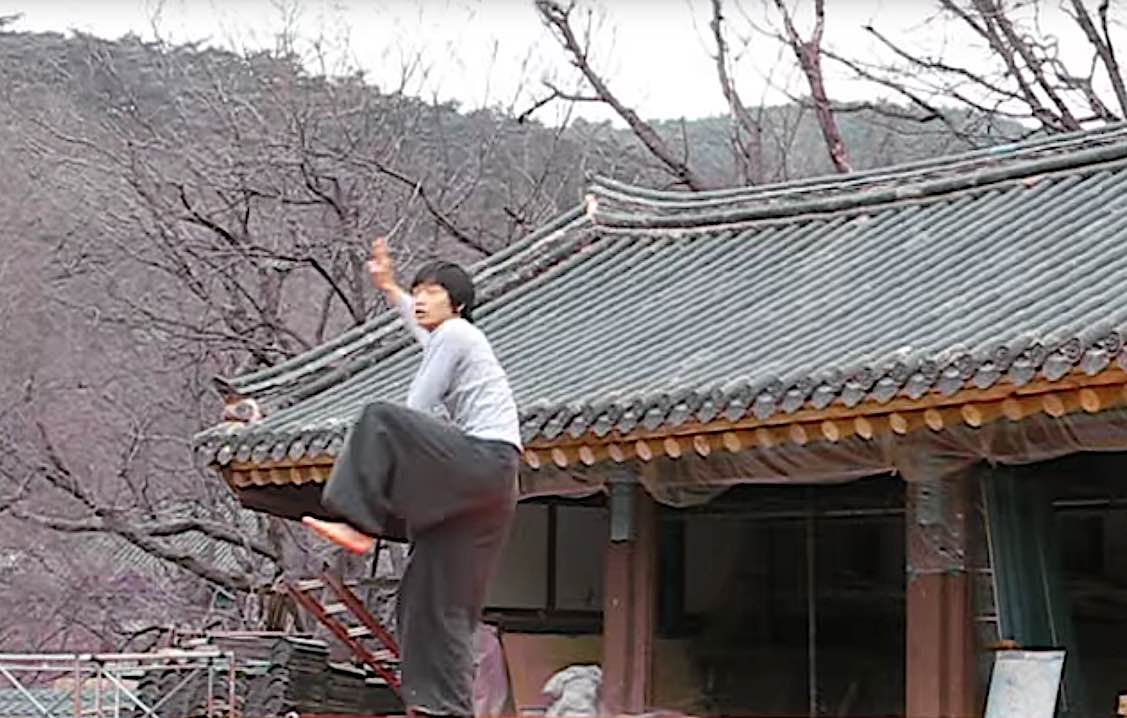
Why is Buddhism more like a martial art than a religion?
In Cula Malunkyovada Sutta, Buddha refused to answer four questions posed by students, including all metaphysical questions. He answered:
“So, Malunkyaputta, remember what is undeclared by me as undeclared, and what is declared by me as declared… And why are they undeclared by me? Because they are not connected with the goal, are not fundamental to the holy life. They do not lead to disenchantment, dispassion, cessation, calming, direct knowledge, self-awakening, Unbinding. That’s why they are undeclared by me.”
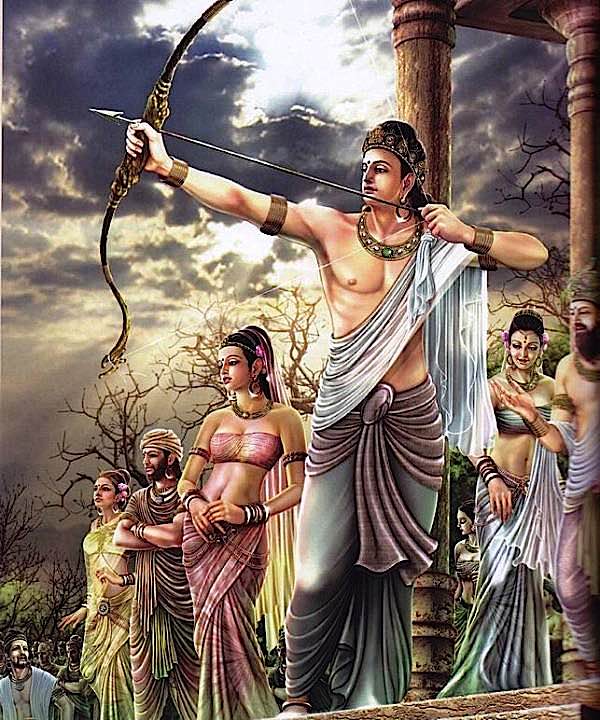
Buddha did declare practical methods
What Buddha did declare in sutta after sutta was the practical teachings to escape the suffering of Samsara: conduct, meditation, and karma (actions). Yes, in Mahayana Sutra he spoke about Buddha Nature and divinity, but again in the context of methods to uncover our own true Buddha Nature.
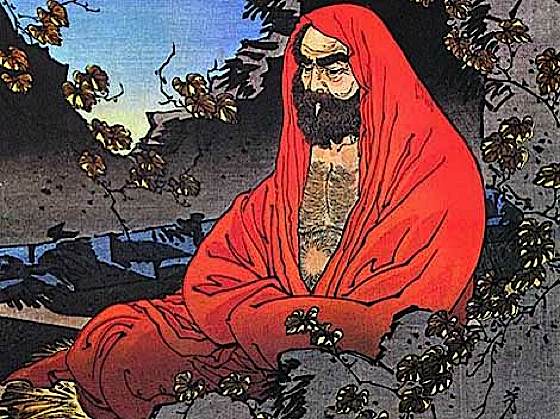
Was Buddha transcendent and worshipful, as might be expected in a religion? Certainly. But he did not teach a Dharma of worship and blind-obedience. He taught a disciplined method to achieve our own Enlightenment. In this way — and others — Buddhism parallels martial arts.
Bodhidharma, the Patriarch of Chan Buddhism, Zen in Japan, is credited with bringing martial arts from India to China. He once said:
“As long as you look for a Buddha somewhere else, you’ll never see that your own mind is the Buddha.”
Mental martial arts: meditation
Shaolin Buddhism is synonymous with both Buddhism and kung fu. Shakyamuni Buddha’s sutta methods are almost more like a “mental” martial art than a devotional path. The Eightfold Path is conduct and discipline-oriented, much like martial arts. Certainly, the more esoteric traditions in Buddhism, such as Tantra, are mind, discipline, and method focused. In Korea, a martial art named sunmundo is part of Zen or Seon Buddhism.
Alejandro Anastasio, an Aikido martial arts instructor and Buddhist teacher, explains what Aikido means to him — in answer to his teacher Dzogchen Khenpo Choga Rinpoche:
“I said, “it [Aikido] is Dharma in motion.” Then he said for me to say it in a different way. “Tactile practice in compassion,” was my response. In a very real way my martial art practice compliments my Dharma work as much as my Dharma work and practice compliments my martial art practice.”
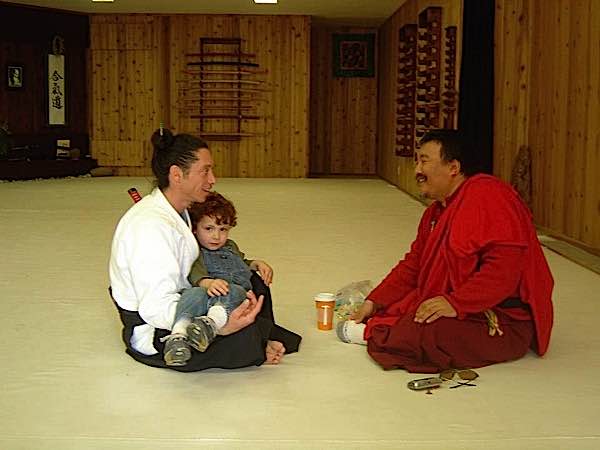
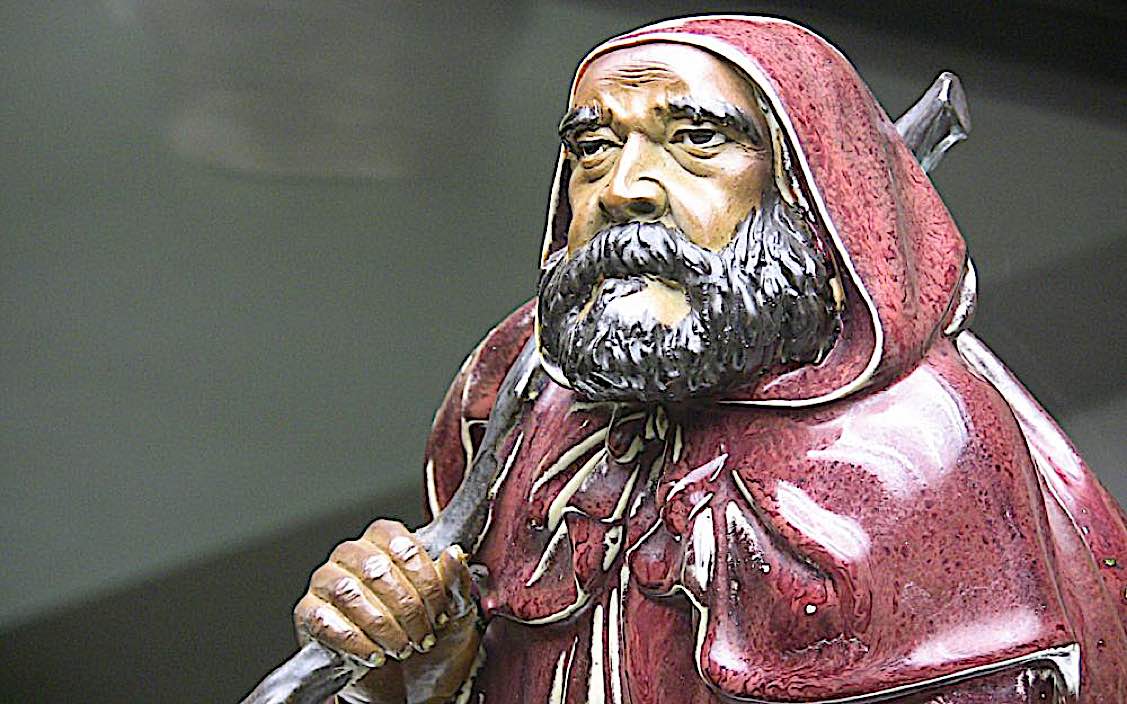
What about religion and worship?
There’s no concept of “creator” or Big G god in Buddhism — although there clearly are devotional practices with Enlightened Deities. Instead, Buddha taught us the path to Enlightenment, where we, ourselves — and all sentient beings — can embrace our Buddha Nature, and escape the suffering of samsara.
What was this Enlightened Buddha Nature? In Samadhiraja Sutra it is described as:
‘Inconceivable, surpassing the sphere of thought, not oscillating between bliss and suffering, surpassing illusory differentiation, placeless, surpassing the voice of those aspiring to the Knowledge of the Buddha, essential, surpassing passion; indivisible, surpassing hatred; steadfast, surpassing infatuation; explained by the indication of emptiness, unborn, surpassing birth, eternal from the standpoint of common experience, undifferentiated in the aspect of Nirvana … cool, unscorched, placeless, unthinkable, blameless, infinite in terms of colours, born of the application of the great supernatural faculty – thus is the Body of the Tathagata to be called.’
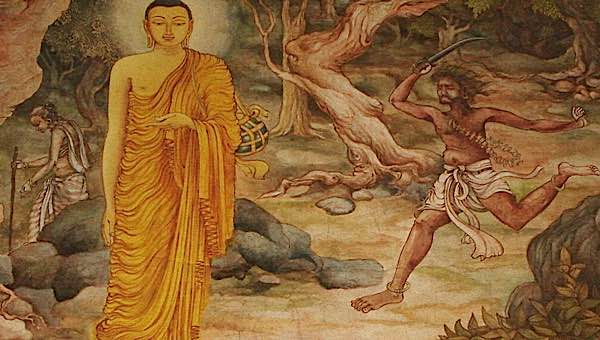
Here, for example, is Buddha’s own description of Buddha, or Tathagata, from the great Mahaparinirvana Sutra [1], making it clear Buddha is beyond the simple concept of Gods:
“The Tathagata is not human: because the Tathagata has abandoned human existence for a long time over countless kalpas [aeons], he is not human. He is not not human: because he was born in the city of Kapilavastu, he is not not human … He is also not a sentient being: because he has abandoned the nature of a sentient being for a long time, the Tathagata is not a sentient being. He is also not not a sentient being: because he has spoken with the attributes of sentient beings on some occasions, the Tathagata is not not a sentient being.
“The Tathagata is not a phenomenon: because the various phenomena each have distinct and different attributes, while the Tathagata is not thus but has only one attribute. He is not not a phenomenon: because the Tathagata is the Dharmadhatu [the all-encompassing realm of Truth itself], he is not not a phenomenon …
“Yet he is also not not eternal. Why not? Because he has severed arising forever. Phenomena endowed with arising are not eternal, whereas phenomena devoid of arising are eternal. The Tathagata is devoid of arising, so he is eternal. Phenomena which are eternal are devoid of intrinsic nature [svabhava], whereas phenomena endowed with intrinsic nature are not eternal. The Tathagata is devoid of arising and lineage. Because he is devoid of arising and lineage, he is eternal…”
Like a great martial arts teacher, he can guide beings…
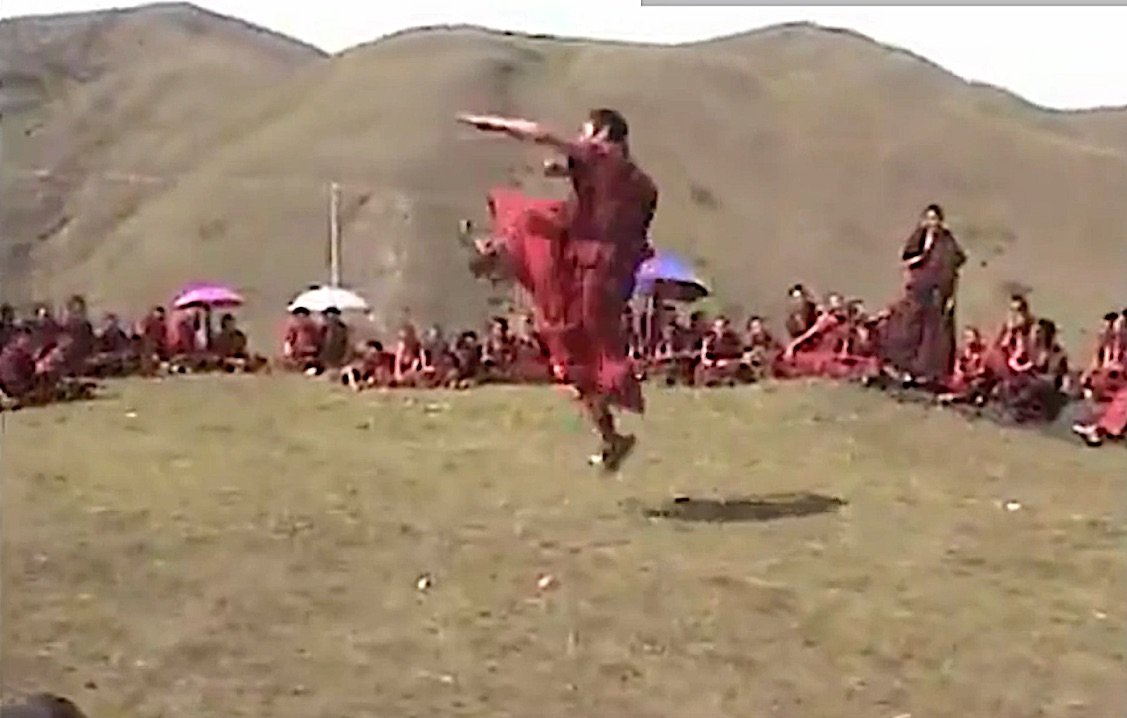
In the same Sutra, which is over 400,000 words in length, Buddha describes the compassion and love of Buddha. Such is the compassion of Buddha that he taught us methods to escape from samsara. Like the great martial arts teacher, he can guide all beings — not just the gifted or the strong — to their own state of Enlightenment.
Yes, there are fantastic, conceptual, almost supernatural elements in the teachings, but Dharma is more method (martial arts) than faith (religion): showing all beings they can be perfect, step by step.
Yes there are Tibetan monastic martial arts and athletic disciplines (which are fun, too!):
Vajrayana Tantra parallels martial arts
Vajrayana Tantra, in particular — and, at risk of extending the metaphor too far — very much parallels martial arts.
- Daily practice, exact same visualizations and words each time, like a kata in karate.
- Reliance on a teacher, a guru, much like a kungfu Shifu.
- Counting and repetition: in Vajrayana, counting mantras repeating mudras; in martial arts use of verbal “Kiai!” (気合) in Karate or Taekwondo, and repeated physical patterns — both designed to “retrain” the mind and body.
- Many inner practices that work with chi (in Tibetan La) flow, much like Tai Chi or Chigong.
- Structured specifically for self-improvement — in this case, spiritual and mental discipline.
- Strong emphasis on visualization: in martial arts, we visualize our fist going “through the board” before we throw the punch.
- Importance of prostration and respect: most martial arts have strong ritualistic components, such as bowing to an opponent or one’s teacher — Vajrayana has similar practices.
- Inner strength and power: in martial arts, demonstrated with legendary methods such as the one-inch punch, in Vajrayana, with Tummo and similar meditations.
- Importance of progressing step-by-step: in martial arts belts, in Vajrayana initiations into more-and-more advanced practices.
- Traditionally, both classical martial artists and Tantrikas or Yogis/Yoginis in Tantra are bound to strict moral code — to act for the benefit of others.
- Mental focus: both Vajrayana Yogis/Yoginis and martial arts experts rely on mental focus and discipline to progress.
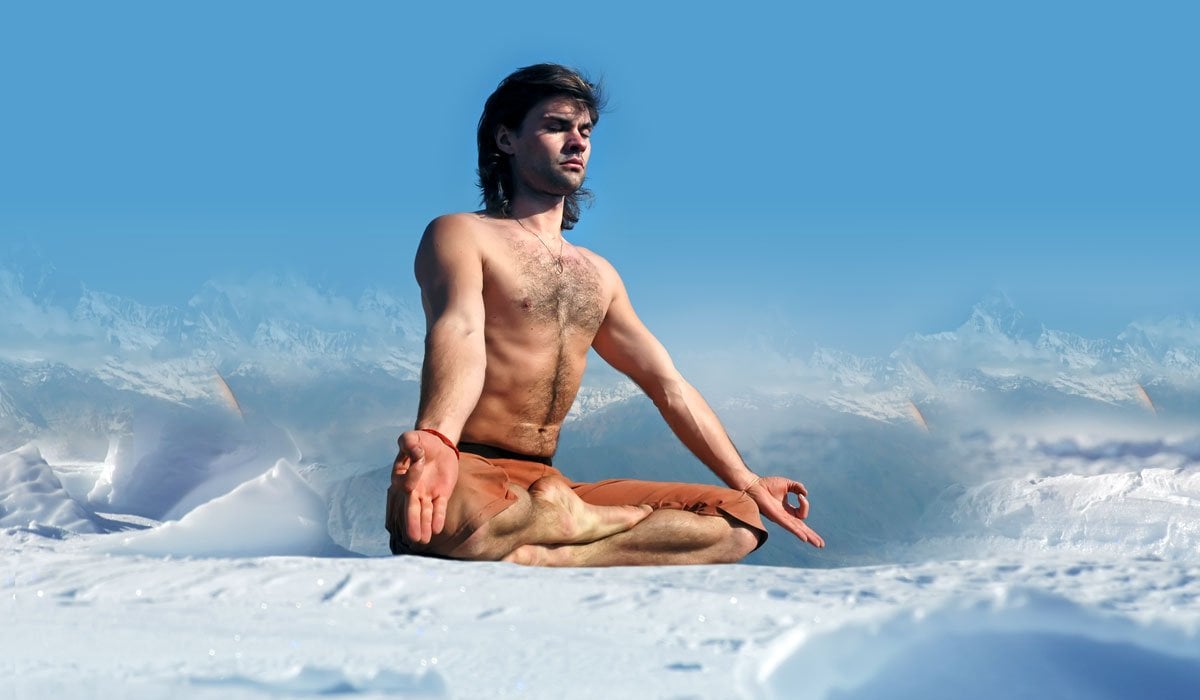
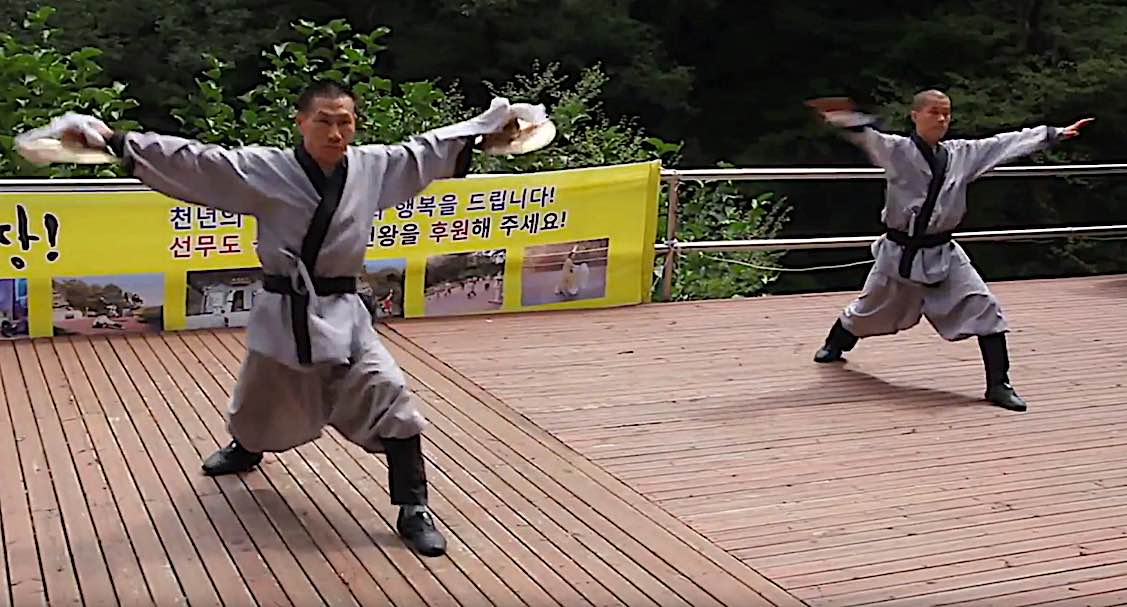
Certainly, the most obvious parallel between Vajrayana Tantric Buddhism and martial arts is the reliance on an expert teacher. In a BW video with H.E. Rinpoche, he explained:
“A coach or teacher is important … because Vajrayana Buddhism is an intense practice, a delicate practice. When you do a delicate practice, intense practice, powerful practice — you need a coach. Guru is a coach!… Generally speaking, in our lives, you need a teacher — for example, martial arts, or sports, tennis — you need a coach, right?”

Martial arts (non metaphor): physical fitness vital to body practice
Master Sheng-yen, a mainstream teacher of Chan Buddhism (based in Taiwan) explained the practical benefits of martial arts in Buddhism:
“Whoever is meditating in a sitting posture must also exercise sometimes. Sitting all the time is not good for your health… Originally, yoga postures were a form of exercise, which derived from sitting meditation.”
“Moreover, when Buddhism spread to China, Chinese monks travelling to India to seek the Dharma, and missionary monks from India had to trudge through Central Asia, on a long and arduous journey, climbing mountains, crossing rivers, and braving the elements every day. It was very tough. If they weren’t physically fit, they wouldn’t have been able to travel such long distances to spread Buddhism to the East. That’s why they’re all more or less trained in gongfu [kung fu]…”
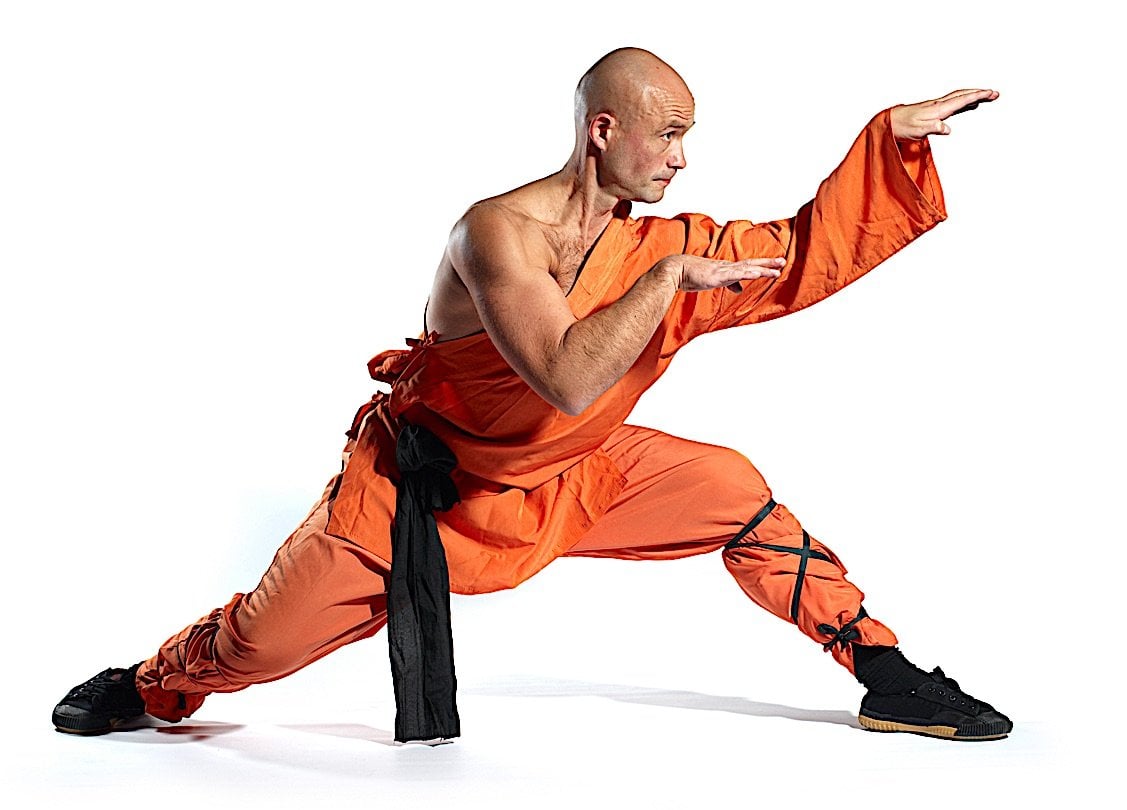
He continues, explaining the legend of Bodhidharma:
“Now, legend has it that when Bodhidharma came to China, he was a great master of martial arts. And, it’s said that Shaolin gongfu has a lot to do with Bodhidharma’s Book on Rejuvenating the Sinews, an early classic on martial arts supposedly brought by Bodhidharma from India… after he brought it from India, Chinese monastics started to practice martial arts.”
The full teaching from Master Sheng-yen:
NOTES
[1] Mahaparinirvana Sutra (Stephen Hodge’s translation) excerpted from Nirvanasutra.net https://www.nirvanasutra.net/buddhaandgod1.htm
[2] From a video teaching “Wy do some monastics practice martial arts” Master Sheng Yen. The full video embedded above.
More articles by this author

Guru Rinpoche is ready to answer and grant wishes: “Repeat this prayer continuously” for the granting of wishes
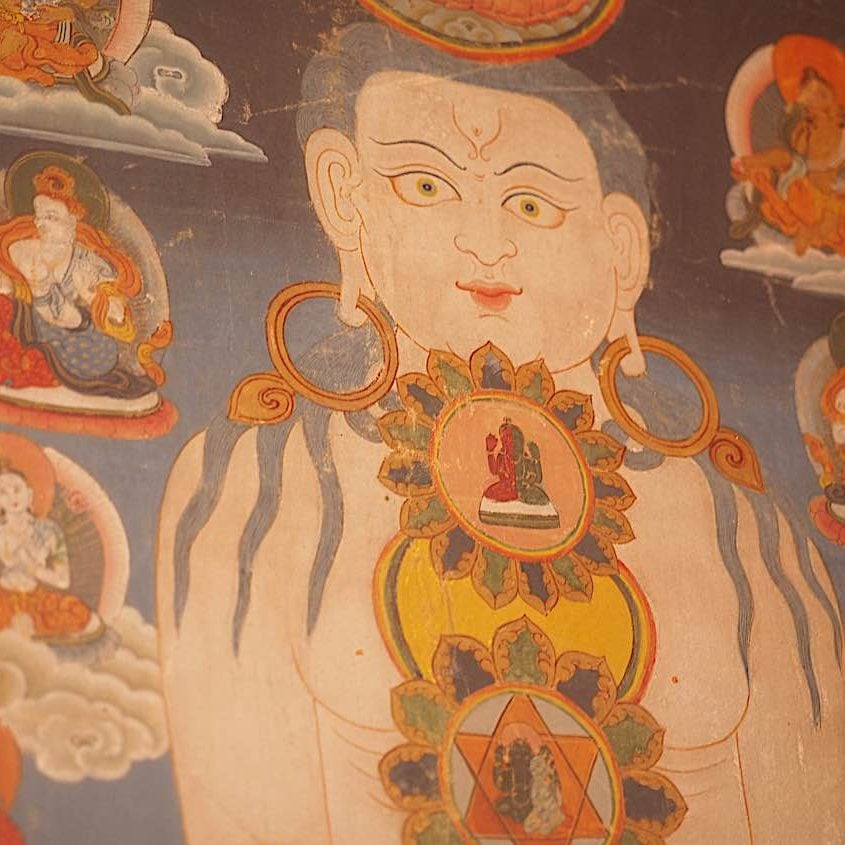
Buddhist body mandala practice in Vajrayana Buddhism — and riding the winds of the inner body “The prana goes where the mind goes.””
Search
Latest Features
Please support the "Spread the Dharma" mission as one of our heroic Dharma Supporting Members, or with a one-time donation.
Please Help Support the “Spread the Dharma” Mission!
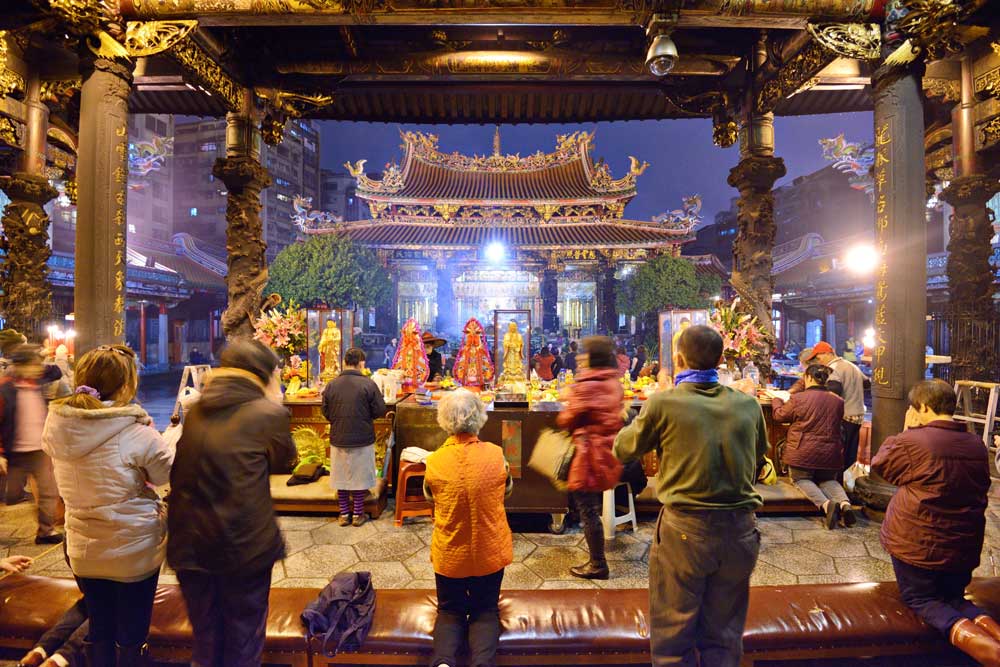
Be a part of the noble mission as a supporting member or a patron, or a volunteer contributor of content.
The power of Dharma to help sentient beings, in part, lies in ensuring access to Buddha’s precious Dharma — the mission of Buddha Weekly. We can’t do it without you!
A non-profit association since 2007, Buddha Weekly published many feature articles, videos, and, podcasts. Please consider supporting the mission to preserve and “Spread the Dharma." Your support as either a patron or a supporting member helps defray the high costs of producing quality Dharma content. Thank you! Learn more here, or become one of our super karma heroes on Patreon.
Lee Kane
Author | Buddha Weekly
Lee Kane is the editor of Buddha Weekly, since 2007. His main focuses as a writer are mindfulness techniques, meditation, Dharma and Sutra commentaries, Buddhist practices, international perspectives and traditions, Vajrayana, Mahayana, Zen. He also covers various events.
Lee also contributes as a writer to various other online magazines and blogs.
